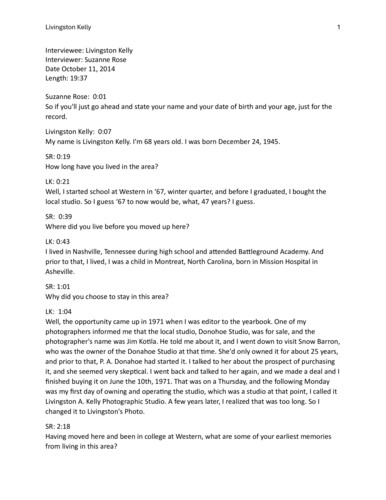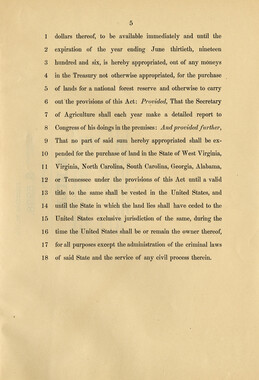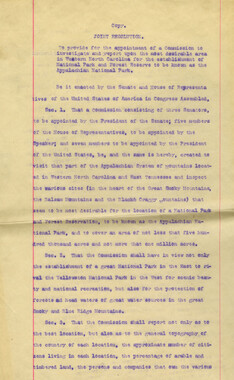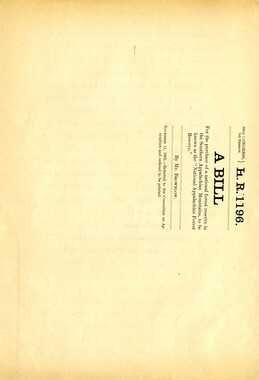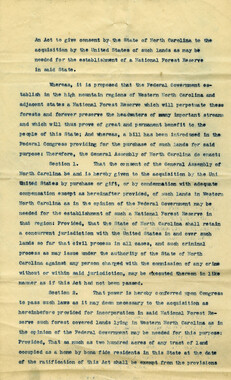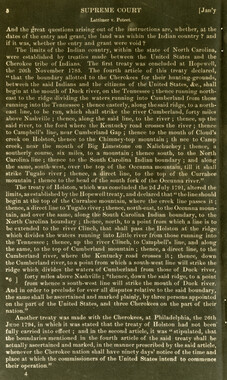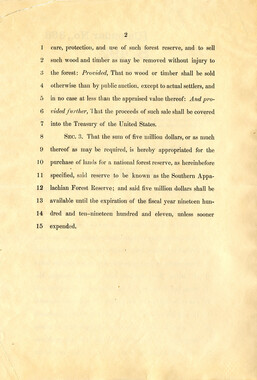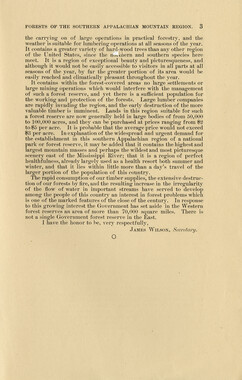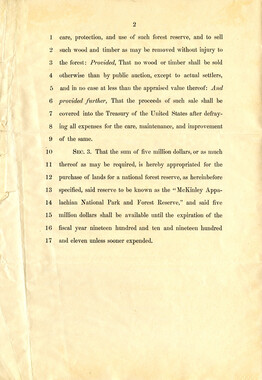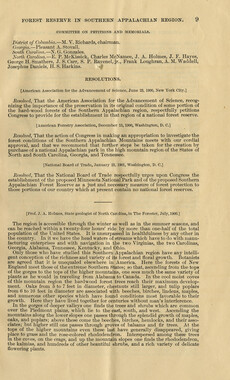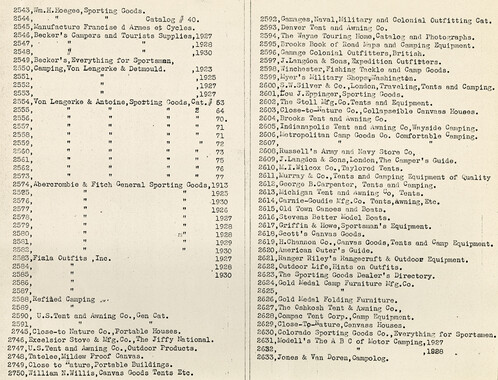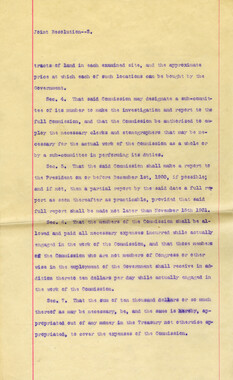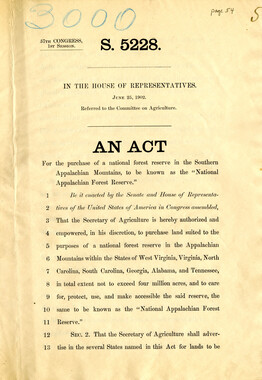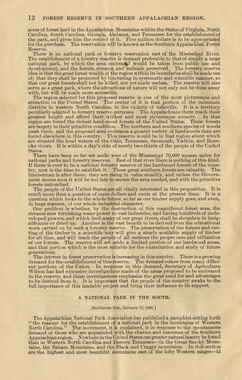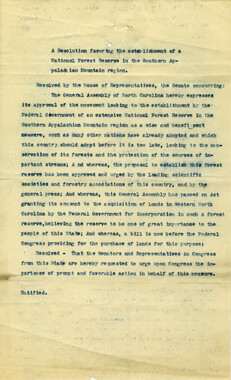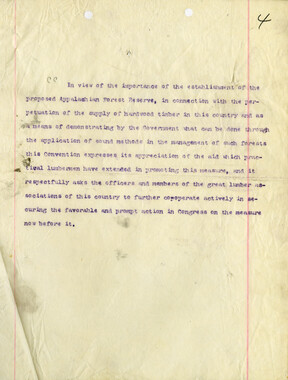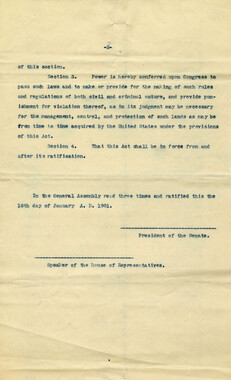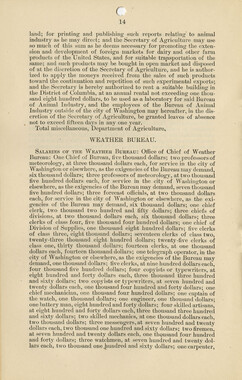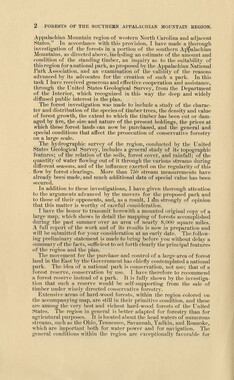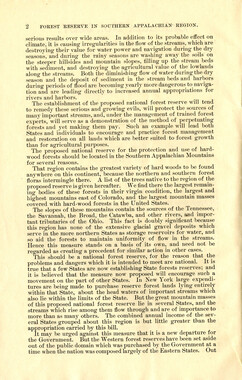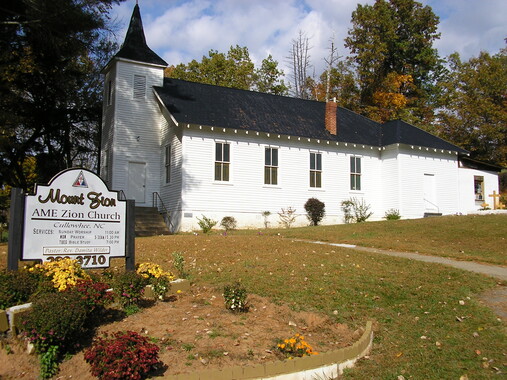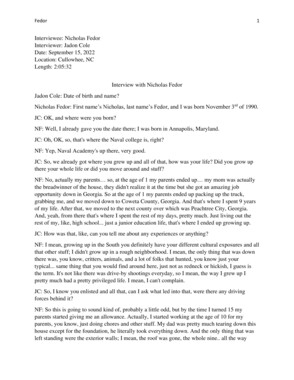Western Carolina University (21)
View all
- Canton Champion Fibre Company (2308)
- Cherokee Traditions (291)
- Civil War in Southern Appalachia (165)
- Craft Revival (1942)
- George Masa Collection (137)
- Great Smoky Mountains - A Park for America (3080)
- Highlights from Western Carolina University (422)
- Horace Kephart (973)
- Journeys Through Jackson (159)
- LGBTQIA+ Archive of Jackson County (89)
- Oral Histories of Western North Carolina (318)
- Picturing Appalachia (6617)
- Stories of Mountain Folk (413)
- Travel Western North Carolina (153)
- Western Carolina University Fine Art Museum Vitreograph Collection (129)
- Western Carolina University Herbarium (92)
- Western Carolina University: Making Memories (738)
- Western Carolina University Publications (2491)
- Western Carolina University Restricted Electronic Theses and Dissertations (146)
- Western North Carolina Regional Maps (71)
- World War II in Southern Appalachia (131)
University of North Carolina Asheville (6)
View all
- Allanstand Cottage Industries (62)
- Appalachian National Park Association (53)
- Bennett, Kelly, 1890-1974 (1463)
- Berry, Walter (76)
- Brasstown Carvers (40)
- Carver, George Washington, 1864?-1943 (26)
- Cathey, Joseph, 1803-1874 (1)
- Champion Fibre Company (233)
- Champion Paper and Fibre Company (297)
- Cherokee Indian Fair Association (16)
- Cherokee Language Program (22)
- Crowe, Amanda (40)
- Edmonston, Thomas Benton, 1842-1907 (7)
- Ensley, A. L. (Abraham Lincoln), 1865-1948 (275)
- Fromer, Irving Rhodes, 1913-1994 (70)
- George Butz (BFS 1907) (46)
- Goodrich, Frances Louisa (120)
- Grant, George Alexander, 1891-1964 (96)
- Heard, Marian Gladys (60)
- Kephart, Calvin, 1883-1969 (15)
- Kephart, Horace, 1862-1931 (313)
- Kephart, Laura, 1862-1954 (67)
- Laney, Gideon Thomas, 1889-1976 (439)
- Masa, George, 1881-1933 (61)
- McElhinney, William Julian, 1896-1953 (44)
- Niggli, Josephina, 1910-1983 (10)
- North Carolina Park Commission (105)
- Osborne, Kezia Stradley (9)
- Owens, Samuel Robert, 1918-1995 (11)
- Penland Weavers and Potters (36)
- Roberts, Vivienne (15)
- Roth, Albert, 1890-1974 (142)
- Schenck, Carl Alwin, 1868-1955 (1)
- Sherrill's Photography Studio (2565)
- Southern Highland Handicraft Guild (127)
- Southern Highlanders, Inc. (71)
- Stalcup, Jesse Bryson (46)
- Stearns, I. K. (213)
- Thompson, James Edward, 1880-1976 (226)
- United States. Indian Arts and Crafts Board (130)
- USFS (683)
- Vance, Zebulon Baird, 1830-1894 (1)
- Weaver, Zebulon, 1872-1948 (58)
- Western Carolina College (230)
- Western Carolina Teachers College (282)
- Western Carolina University (2008)
- Western Carolina University. Mountain Heritage Center (18)
- Whitman, Walt, 1819-1892 (10)
- Wilburn, Hiram Coleman, 1880-1967 (73)
- Williams, Isadora (3)
- Cain, Doreyl Ammons (0)
- Crittenden, Lorraine (0)
- Rhodes, Judy (0)
- Smith, Edward Clark (0)
- Appalachian Region, Southern (3032)
- Asheville (N.C.) (1945)
- Avery County (N.C.) (26)
- Blount County (Tenn.) (195)
- Buncombe County (N.C.) (1680)
- Cherokee County (N.C.) (283)
- Clay County (N.C.) (556)
- Graham County (N.C.) (238)
- Great Smoky Mountains National Park (N.C. and Tenn.) (525)
- Haywood County (N.C.) (3573)
- Henderson County (N.C.) (70)
- Jackson County (N.C.) (4925)
- Knox County (Tenn.) (35)
- Knoxville (Tenn.) (13)
- Lake Santeetlah (N.C.) (10)
- Macon County (N.C.) (421)
- Madison County (N.C.) (216)
- McDowell County (N.C.) (39)
- Mitchell County (N.C.) (135)
- Polk County (N.C.) (35)
- Qualla Boundary (982)
- Rutherford County (N.C.) (78)
- Swain County (N.C.) (2185)
- Transylvania County (N.C.) (270)
- Watauga County (N.C.) (12)
- Waynesville (N.C.) (86)
- Yancey County (N.C.) (72)
- Aerial Photographs (3)
- Aerial Views (60)
- Albums (books) (4)
- Articles (1)
- Artifacts (object Genre) (228)
- Bibliographies (1)
- Biography (general Genre) (2)
- Cards (information Artifacts) (38)
- Clippings (information Artifacts) (192)
- Copybooks (instructional Materials) (3)
- Crafts (art Genres) (622)
- Depictions (visual Works) (21)
- Design Drawings (1)
- Digital Moving Image Formats (2)
- Drawings (visual Works) (185)
- Envelopes (101)
- Exhibitions (events) (1)
- Facsimiles (reproductions) (1)
- Fiction (general Genre) (4)
- Financial Records (12)
- Fliers (printed Matter) (67)
- Glass Plate Negatives (381)
- Guidebooks (2)
- Internegatives (10)
- Interviews (823)
- Land Surveys (102)
- Letters (correspondence) (1045)
- Manuscripts (documents) (618)
- Maps (documents) (177)
- Memorandums (25)
- Minutes (administrative Records) (59)
- Negatives (photographs) (6090)
- Newsletters (1290)
- Newspapers (2)
- Notebooks (8)
- Occupation Currency (1)
- Paintings (visual Works) (1)
- Pen And Ink Drawings (1)
- Periodicals (194)
- Personal Narratives (10)
- Photographs (12977)
- Plans (maps) (1)
- Poetry (6)
- Portraits (4568)
- Postcards (329)
- Programs (documents) (181)
- Publications (documents) (2444)
- Questionnaires (65)
- Relief Prints (26)
- Sayings (literary Genre) (1)
- Scrapbooks (282)
- Sheet Music (2)
- Slides (photographs) (402)
- Songs (musical Compositions) (2)
- Sound Recordings (802)
- Specimens (92)
- Speeches (documents) (18)
- Tintypes (photographs) (8)
- Transcripts (329)
- Text Messages (0)
- A.L. Ensley Collection (275)
- Appalachian Industrial School Records (7)
- Appalachian National Park Association Records (336)
- Axley-Meroney Collection (2)
- Bayard Wootten Photograph Collection (20)
- Bethel Rural Community Organization Collection (7)
- Blumer Collection (5)
- C.W. Slagle Collection (20)
- Canton Area Historical Museum (2110)
- Carlos C. Campbell Collection (462)
- Cataloochee History Project (64)
- Cherokee Studies Collection (4)
- Daisy Dame Photograph Album (5)
- Daniel Boone VI Collection (1)
- Doris Ulmann Photograph Collection (112)
- Elizabeth H. Lasley Collection (1)
- Elizabeth Woolworth Szold Fleharty Collection (4)
- Frank Fry Collection (95)
- George Masa Collection (173)
- Gideon Laney Collection (452)
- Hazel Scarborough Collection (2)
- Hiram C. Wilburn Papers (28)
- Historic Photographs Collection (236)
- Horace Kephart Collection (861)
- Humbard Collection (33)
- Hunter and Weaver Families Collection (1)
- I. D. Blumenthal Collection (4)
- Isadora Williams Collection (4)
- Jesse Bryson Stalcup Collection (47)
- Jim Thompson Collection (224)
- John B. Battle Collection (7)
- John C. Campbell Folk School Records (80)
- John Parris Collection (6)
- Judaculla Rock project (2)
- Kelly Bennett Collection (1482)
- Love Family Papers (11)
- Major Wiley Parris Civil War Letters (3)
- Map Collection (12)
- McFee-Misemer Civil War Letters (34)
- Mountain Heritage Center Collection (4)
- Norburn - Robertson - Thomson Families Collection (44)
- Pauline Hood Collection (7)
- Pre-Guild Collection (2)
- Qualla Arts and Crafts Mutual Collection (12)
- R.A. Romanes Collection (681)
- Rosser H. Taylor Collection (1)
- Samuel Robert Owens Collection (94)
- Sara Madison Collection (144)
- Sherrill Studio Photo Collection (2558)
- Smoky Mountains Hiking Club Collection (616)
- Stories of Mountain Folk - Radio Programs (374)
- The Reporter, Western Carolina University (510)
- Venoy and Elizabeth Reed Collection (16)
- WCU Gender and Sexuality Oral History Project (36)
- WCU Mountain Heritage Center Oral Histories (25)
- WCU Oral History Collection - Mountain People, Mountain Lives (71)
- WCU Students Newspapers Collection (1923)
- Western North Carolina Tomorrow Black Oral History Project (69)
- William Williams Stringfield Collection (2)
- Zebulon Weaver Collection (109)
- African Americans (390)
- Appalachian Trail (35)
- Artisans (521)
- Cherokee art (84)
- Cherokee artists -- North Carolina (10)
- Cherokee language (21)
- Cherokee pottery (101)
- Cherokee women (208)
- Church buildings (190)
- Civilian Conservation Corps (U.S.) (111)
- College student newspapers and periodicals (2012)
- Dams (108)
- Dance (1023)
- Education (222)
- Floods (63)
- Folk music (1015)
- Forced removal, 1813-1903 (2)
- Forest conservation (220)
- Forests and forestry (1198)
- Gender nonconformity (4)
- Great Smoky Mountains National Park (N.C. and Tenn.) (181)
- Hunting (47)
- Landscape photography (25)
- Logging (122)
- Maps (83)
- Mines and mineral resources (9)
- North Carolina -- Maps (18)
- Paper industry (38)
- Postcards (255)
- Pottery (135)
- Railroad trains (72)
- Rural electrification -- North Carolina, Western (3)
- School integration -- Southern States (2)
- Segregation -- North Carolina, Western (5)
- Slavery (5)
- Sports (452)
- Storytelling (243)
- Waterfalls -- Great Smoky Mountains (N.C. and Tenn.) (66)
- Weaving -- Appalachian Region, Southern (280)
- Wood-carving -- Appalachian Region, Southern (328)
- World War, 1939-1945 (173)
Interview with Livingston Kelly, transcript
Item
Item’s are ‘child’ level descriptions to ‘parent’ objects, (e.g. one page of a whole book).
-
-
Livingston Kelly 1 Interviewee: Livingston Kelly Interviewer: Suzanne Rose Date October 11, 2014 Length: 19:37 Suzanne Rose: 0:01 So if you'll just go ahead and state your name and your date of birth and your age, just for the record. Livingston Kelly: 0:07 My name is Livingston Kelly. I'm 68 years old. I was born December 24, 1945. SR: 0:19 How long have you lived in the area? LK: 0:21 Well, I started school at Western in ‘67, winter quarter, and before I graduated, I bought the local studio. So I guess ‘67 to now would be, what, 47 years? I guess. SR: 0:39 Where did you live before you moved up here? LK: 0:43 I lived in Nashville, Tennessee during high school and attended Battleground Academy. And prior to that, I lived, I was a child in Montreat, North Carolina, born in Mission Hospital in Asheville. SR: 1:01 Why did you choose to stay in this area? LK: 1:04 Well, the opportunity came up in 1971 when I was editor to the yearbook. One of my photographers informed me that the local studio, Donohoe Studio, was for sale, and the photographer's name was Jim Kotila. He told me about it, and I went down to visit Snow Barron, who was the owner of the Donahoe Studio at that time. She'd only owned it for about 25 years, and prior to that, P. A. Donahoe had started it. I talked to her about the prospect of purchasing it, and she seemed very skeptical. I went back and talked to her again, and we made a deal and I finished buying it on June the 10th, 1971. That was on a Thursday, and the following Monday was my first day of owning and operating the studio, which was a studio at that point, I called it Livingston A. Kelly Photographic Studio. A few years later, I realized that was too long. So I changed it to Livingston's Photo. SR: 2:18 Having moved here and been in college at Western, what are some of your earliest memories from living in this area? Livingston Kelly 2 LK: 2:28 Well, I really enjoyed going to the lakes, Cedar Cliff Lake, Bear Lake, and Wolf Lake—swimming, fishing, and tubing. I had some friends that shared that same interest, and we had a good time doing that. In the same year, 1971, I entered the first annual tubing race, which was done without a wetsuit, on January 25. I signed up last. I was number 37, and I told my friend when I heard about it first, I'll win that because there's a $50 prize, and I desperately needed $50. I started last, I jumped in the river last, up at Dick's Gap Ridge, and we finished at the dam. I was way ahead of everybody else because they thought they could just float down, and most of them froze and got out. I paddled as hard as I could, and I was way ahead. But at the end, I decided I would jump out of my tube and swim to the shore. When I jumped out of my tube, I went limp. John Newman, who had just recently joined the staff at Western in the computer department, was in a rescue boat and he pulled me out, and he said that was the limpest thing he ever touched. So, that's some of the things I enjoyed. I enjoyed winning the tubing race. SR: 3:52 That's wonderful. In addition to those memories, what are some of your favorite memories from your entire time living here? LK: 4:00 That was probably one of my most heroic experiences. The Navy said you couldn't live that long in water that cold. But I did anyway. I enjoyed that, and like I said, I enjoyed going to the lake and tubing, riding, paddling. I didn't have any money much to do anything, so I just got an old inner tube and paddled around the lake and fished. It was really beautiful and fun. I did manage to have an old car, and I enjoyed riding around the mountains, exploring, and seeing what was on the other side of the hill. SR: 4:47 Are there any changes in the community that stick out in your mind since you started? LK: 4:54 Yeah, probably. I guess it's kind of a mixed blessing. When I first discovered Sylva and first opened the studio or bought the studio here, the Mead Corporation was here. Mead Corporation was a great employer, it was a paper plant. But the downside to it was every morning you got up, and there was about a half inch of black all over everything, and the creek was black. It was a very controversial issue. When Mead decided to close, there were a lot of hard feelings because the people who worked there didn't like it, and the people who didn't work there did like it. The plant stayed vacant for a number of years. I remember taking pictures when they demolished the smokestack. I had a Nikon camera with a rapid motor on it and took a series of 36 pictures as it fell. It was a tall tower, a brick tower, like, I don't know, 75 feet tall, maybe 50. It was tall. I ran a whole roll of film while it fell. That was kind of neat. The question was changes, and I think that was a big change for the area because the creek cleaned up and the air cleaned up a lot. Now we have a paper plant there that deals with recycling. They take cardboard and make more corrugated cardboard, and they're perfectly clean. They don't put Livingston Kelly 3 anything in the creek, they don’t put anything in the air except steam. So it's an ideal change for industry and the community because they're a big employer too. Other changes, Western has grown a lot. It's become much larger, three times the size it was when I was in school. It's got a big campus, and it's very attractive to a lot of people from other states and all over North Carolina. Cherokees have changed a lot. It's really affiliated with Sylva because people go to Harrah's and then come shopping in Sylva. That's caused a lot of change and has been a great financial benefit to employees and the tribe. So that’s a big change I think too. And just some of the recent efforts by the town board in the last 10 or 15 years have been towards beautification. It seems like people forget how something looked after it's been improved. The difference now, and before that, is dramatic. It's a lot better-looking place than it used to be, and it was beautiful then even because, for a while, it was kind of run down a little bit with old light poles and things. That had a certain beauty to it too. I had customers who come from other states who said, don't change a thing. But it has changed and improved. It's a lot prettier now. SR: 8:16 Are there are parts of the community that have remained the same? LK: 8:21 I'm sure there are. Of course, there's a lot of homes that have remained the same. We have Dan Moore, the first governor, I think, in the western part of the state was Dan Moore and his home is owned by Orville Coward now. It's right up the street from the old courthouse or the new library. That's another big change was the library, we restored the old courthouse. Governor Moore's house is there, just like it was back when he was governor. Things like that are still there. There's a lot of, I think, there's a lot of...Consistency to the community. Some people leave, but there's a lot of people that have stayed, a lot of families, and several generations of families that have kept things somewhat the same. You get to know people, and the families remain. Some of them do, and that's nice. Some consistency to the community is valuable, I think. SR: 9:31 Now you said you purchased the studio, and now it's become Livingston's Photo. How did you decide to go about purchasing the studio? LK: 9:42 I had to struggle to come up with the money. But when I was very little, my mother had a box camera, and she took pictures, and I thought that was pretty cool. By the time I got into high school, I decided that I was really fascinated by photography. So I got an Ansco Cadet 2 127 camera for Christmas, and I developed the first roll of film I ever took in my bathroom. It just seemed very fascinating to me. I just thought photographers are so cool, and I thought it was a fascinating subject. I couldn't stop thinking about it. I kept dreaming about having the studio, and then I dreamed about having the camera shop. Ultimately, the studio that I bought and did operate for a while, I couldn't take sitting there waiting on somebody else to come in to get some work done. So I started doing photo finishing, then I started selling cameras, and then I Livingston Kelly 4 had one of the first one-hour labs in North Carolina. In about 1981, I was the only one in North Carolina to have a one-hour lab, except for one in Durham. I had my first one-hour lab in Sylva. I didn’t want to consider anything else, I wanted to be in photography. At this point I'm in framing more than photography. I still do passport pictures and photo finishing, with the help of my wife and my son. They do more of the photo finishing, I do mostly framing. I do so still sell cameras, and like I just did, I rarely do a job of photography, but I've done I just got through doing the town picture at the fountain just a few minutes ago. So I do a few things, but not not a lot of photography. I stopped doing weddings like 30 years ago or more. About 35 years ago. SR: 11:42 Is there anything special about the area that lends itself to being a photographic area? LK: 11:49 I've had customers from from Sanibel. I had one customer from Sanibel. He was a policeman in Sanibel, Florida, on the island of Sanibel, and for years and years, he would come every summer and take pictures of all kinds of flowers and creeks and streams and trees and mountains. He took beautiful pictures. John Slater was his name. He would do. He was a great customer. He bought cameras from me. He had photo finishing. Every year he had just load he'd bring in like, 20 rolls of film. And his pictures were beautiful. They were so good. He should have been a professional, but, and he passed away, I think, last year, and I was very sad about that, but, but the area does attract photographers, and it has tremendous natural beauty. There's the waterfalls, or people from all over the world. Love the waterfalls here, and literally all over the world. I have customers that come in for passport pictures and visa pictures and green card pictures from many, many countries. I've had, one of the questions on your list was, who was my first customer? My first customer was from Peru, a passport picture. So, so the area does attract people. It is beautiful. And so that's, I guess that's a long answer to a short question. SR: 13:25 I know you said you don't really photograph that often anymore, but what is your favorite type of subject? LK: 13:32 It's, I tried to think about that a bit, and I sort of like architectural photography, and I do like I have enjoyed doing, actually, I think probably occupational portraits I used to I found as a fascinating thing. When I was trying to survive in school, I would go out and take pictures of people on the job and construction sites and I would just take pictures of them, and then I go back and take them some 8x10s, and say, “You want to show your family what you what it looks like when you're working where they don't see you?” And they say, “Oh, sure, we'll buy those.” And so I thought that was kind of nice and fun and functional and helpful. Because really we think about it, families say goodbye to their father or mother, and they go off to work, and they don't know what they do. They don't see them laying brick or driving nails or painting the building or driving a bulldozer and or it could be, you know, golfers, or it could be whatever you do, football players, when they're doing their occupation, lot of times, the family doesn't know Livingston Kelly 5 what it looks like. And if you can get a picture of them, it's of them, it's a sure sale. And it's fun to do that. SR: 14:47 Has the business always been in the same location? LK: 14:51 No, no. Well, it's been in the same two blocks. But I started out over what is now Guadalupe Café and was then Hooper's Drug Store, which is now Kelsave. And Bob Kelly, who's been in business about four years longer than I, was in what's Hooper's Drug Store was, and I was directly over him. From 1971, I was there until 1973, when I moved down to where the Jewelry Outlet is now, when Jackson Savings left that location. I stayed there and kept the studio up over Hooper's Drug Store until '75, and then went from a small house to a larger house in Cullowhee, so I could have a darkroom there. So, I let go of the studio there, the darkroom. In '78, I moved from where the Jewelry Outlet is now to the former Jackson Furniture Building. Then, in 1990, I got the two buildings beside that. So now, and then in 2000, we put the main entrance in the middle building. We got a freight door on one side and no door on the other side. Recently, I got signs finally saying "Enter Next Door" because people always looked at that far building and wandered back and forth, asking, "How do you get in there?" Finally, last week, we got signs saying "Enter Next Door" after 14 years. SR: 16:26 What is your favorite part of the photographic process? I know you said the film was what drew you in. LK: 16:33 Yeah, I enjoyed film. There's always that mystery between the time you take the picture and the time you get it developed. And I enjoyed that, although sometimes it gave me gray hairs, as you can tell, because I remember one time I had, I did a class reunion, and I just got the camera in, just received it that week, and I had one setting on it wrong. I had it set on M instead of SR:. That means, when you use the flash, if you have it set on M, that's for bulbs. And I had an electronic flash, and I got nothing. I went and developed it real quick and found nothing on it. I called them back and said, "I gotta take that picture again." I went back and took it again, not knowing what had happened. I didn't change that, and I got no picture. I had to give all the money back. So, that mystery can be a very upsetting experience, but it's still fun to have the mystery. Most of the time you get things right, but sometimes you get them wrong. I don't know if that's really a joy of it, but I got fascinated by different cameras, and I guess I became more of an admirer of the equipment and cameras than I did a user. I started selling cameras, and I got interested in different brands and different features and little details about them. That's fun. SR: 17:59 Is there anything else that you would like to share, any other stories, or anything that you want? Livingston Kelly 6 LK: 18:04 Well, it's kind of weird. R. O. Vance passed away this week, and he probably promoted me to being the longest-running merchant on Main Street because he was the longest-running merchant. He closed last year, and so I went to friends and family visitation for him the other night, and I told his wife that R. O. made me the longest-running merchant on Main Street, which I don't know if that's good or not, but it's kind of weird. I don't know if I can think of anything else to tell you or not. Maybe I've said enough. . SR: 18:46 Yeah, it's been a long day too. But I mean, if you're done, then we're done. LK: 18:55 Okay, yeah, very good. Thank you. I guess, oh, I know something I ought to say. When I first went to Western, I thought I was going to major in chemistry or physics because I thought that had to do with photography. Thank goodness I failed chemistry and changed to business, because accounting is something everybody ought to study. Whether they're a minister, a doctor, a lawyer, a photographer, or a truck driver, they ought to study accounting because it helps so much to know something about the way money comes and goes. So, if I had something to leave people with, it's to go study accounting. SR: That's wonderful. LK: 19:34 Thank you. SR: 19:35 Thank you.
Object
Object’s are ‘parent’ level descriptions to ‘children’ items, (e.g. a book with pages).
-
Livingston Kelly talks about his love of photography and how he got started in the business. He opened his first photography studio above Hoopers Drug Store on Main Street in Sylva, NC in 1971 and continues to operate Livingston’s Photo, 43 years later, just a block down the street from its original location. For a time, he had one of two one-hour photo labs in North Carolina, the other one being in Durham. He discusses changes he has seen in Sylva over the last few decades including less pollution after the closing of the Mead Corporation, the renovation of the old courthouse into a library, and general beautification of downtown.
-
